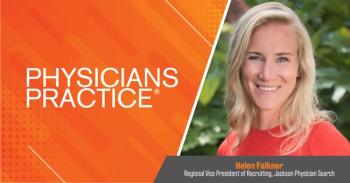
"Nobody wants to work:" A generational guide for practice staffing
How evolving workplace attitudes are transforming healthcare staffing, as COVID-19 accelerates trends like remote work, mental health support, and modernized technology.
Practices nationwide are feeling the pressures of a changing workforce, as the new
Generational attitudes toward work have undergone a marked evolution over the past several decades. From Baby Boomers—who generally entered structured, hierarchical workplaces—to Generation Z—whose earliest career experiences have been profoundly shaped by the COVID-19 pandemic—employers across industries, including health care, must adapt to shifting expectations to recruit and retain staff effectively.
A legacy of loyalty
Baby Boomers (1946-1964) came of age in an environment that championed traditional career paths and a strong sense of employer loyalty. In many cases, these individuals spent much of their working lives at a single institution. In health care, specifically, this often translated into decades with the same hospital or physician practice, forming deep institutional knowledge and long-standing professional networks. As Boomers now retire in large numbers—a trend noted in
The independent pragmatists
Gen X (1965-1980) frequently labels itself as the “middle child” of the workforce, sandwiched between two massive cohorts. Known for prioritizing work-life balance—even before that phrase was in vogue—Gen X was the first generation to experience widespread dual-income households and the simultaneous responsibilities of caring for both children and aging parents. Their adaptability carries into health care, where many Gen X professionals merge the hierarchical leadership style favored by Boomers with a willingness to embrace new technology and protocols. Physician practice managers who want to retain Gen Xers often offer flexible scheduling, autonomy, and career development perks such as continuing medical education opportunities or specialized certifications.
Millennials and mission-driven work
Millennials (1981-1996) became the largest cohort in the U.S. labor force in the mid-2010s, according to the
Gen Z steps in
Gen Z (roughly 1997-2012) comprises the first fully “digital native” generation, having grown up with the internet, smartphones, and social media. Unlike many millennials—who recall at least part of their childhood without pervasive digital technology—Gen Z is accustomed to immediate communication and rapid feedback loops. In health care, this translates to a high comfort level with telehealth, remote patient monitoring, and other digital platforms.
Emphasis on mental health and well-being
Across the board, employees are increasingly citing mental health as a crucial concern. However, Gen Z is uniquely vocal about advocating for workplace initiatives that address stress, burnout, and overall well-being. The American Psychological Association’s
COVID-19 and the Great Resignation
The pandemic underscored workplace vulnerabilities and accelerated existing changes in employment attitudes. In health care especially, employees were under enormous strain: elevated patient volumes, supply shortages, and chronically thin staffing structures. These conditions contributed to what has been called the “Great Resignation,” when unprecedented numbers of workers voluntarily left their jobs in search of better compensation, safer conditions, or more flexible arrangements. Data from the
Adapting to remote and hybrid work
While remote or hybrid work is more common in some industries, health care organizations have found ways to offer partial work-from-home arrangements for administrative roles. Tasks such as billing, scheduling, insurance pre-authorizations, and telehealth triage increasingly lend themselves to remote or hybrid setups. Gen X employees often appreciate the flexibility for family responsibilities, while millennials and Gen Z treat such models as a given rather than a perk. A
Quick to Speak Out, Quick to Move On
Gen Z’s digital fluency also informs its readiness to call out policies or practices perceived as outdated or misaligned with personal values. Younger workers are more likely to leave a role if an employer does not meet their expectations for inclusivity, values alignment, or work-life balance. This stands in contrast to many Boomers, Gen Xers, and even some millennials, who historically stayed in roles longer due to economic concerns or cultural norms around job tenure.
Looking ahead
For physician practices aiming to navigate generational differences, strategies often include:
- Transparent communication: Provide frequent updates on staffing, protocols, and leadership decisions.
- Flexible scheduling where possible: Enable remote or hybrid models for administrative tasks; consider part-time or job-sharing roles.
- Targeted professional development: Offer mentoring programs, continuing education stipends, and clear leadership pathways.
- Technology investments: Enhance telehealth services and user-friendly electronic health record systems to align with Gen Z’s digital expectations.
- Mental health support: Normalize wellness discussions, provide access to counseling, and incorporate stress-management resources into daily workflows.
By recognizing and accommodating these varying work styles—from Baby Boomers nearing retirement to Gen Z entering the profession—health care organizations can strengthen their teams, respond more effectively to patient needs, and better position themselves to thrive in an era of rapid transformation.
Newsletter
Optimize your practice with the Physicians Practice newsletter, offering management pearls, leadership tips, and business strategies tailored for practice administrators and physicians of any specialty.








